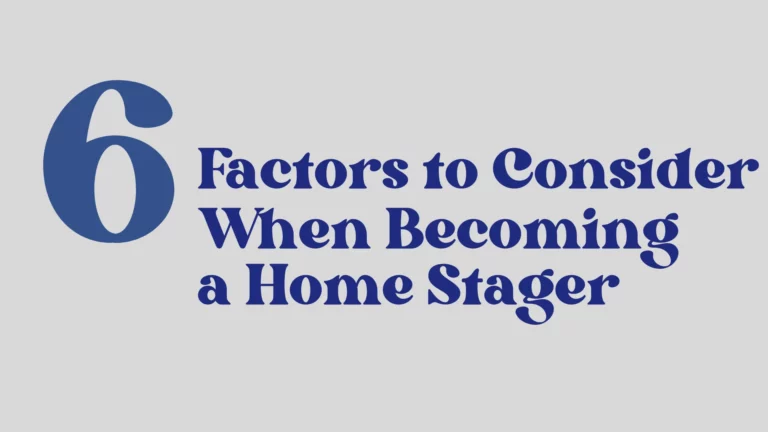Myth Busting: The Six
Myths of Home Staging

When preparing to sell a home, many homeowners ponder whether to enlist the services of a professional home stager. Home staging, defined as the art of preparing a home to appeal to the widest array of buyers, is an often misunderstood yet crucial step in the home-selling process. This specialized skill involves more than just good taste; it requires a strategic approach to design and presentation, aiming to showcase a home’s best features while making it inviting to potential buyers.
In this article, we will explore and debunk six common myths about home staging, illuminating the truths behind this practice and its significant impact on the successful sale of a home.
Myth #1:
There’s a common belief that hiring a professional home stager means you’ll have to throw everything out. In reality, a Certified UltimateStager™ is skilled in transforming a home into an appealing property for sale, aiming for mass appeal rather than individual appeal.
The process involves depersonalizing the space, as the way we live in our home is not always the best way to market it. A professional stager approaches this task with a neutral, objective viewpoint and is trained to edit, depersonalize, and declutter, ensuring the home appeals to the majority of prospective buyers.
Myth #2:
Many confuse home staging with home decorating. While decorating personalizes a space to reflect the homeowner’s taste, home staging takes the opposite approach. The aim is to depersonalize and neutralize the space, creating a clean, inviting canvas that appeals to a diverse range of buyers.
This might involve using neutral colour palettes, removing eccentric artwork, or rearranging furniture to showcase the home’s best features. The focus is on potential buyers’ preferences and desires, not the current homeowner’s style.
Myth #3:
Some believe that anyone can stage a home. However, it’s a specialized skill that requires training and expertise.
Certified UltimateStagers™ are adept at making data-driven decisions based on market trends and buyer psychology. They understand how to create emotional connections through staging, which can significantly influence buyers’ perceptions and decisions. This professional insight is crucial in highlighting a home’s strengths and downplaying its weaknesses.
Myth #4:
Another myth is that home staging is an unnecessary expense. In contrast, it should be seen as a strategic investment.
Data shows that staged homes not only sell faster but often at a higher price point, largely due to their enhanced appeal in photographs and viewings. This increased attractiveness in online listings is particularly crucial, as most buyers begin their home search online.
The initial cost of staging is typically offset by the higher selling price and reduced time on the market.
Myth #5:
There’s a common belief that staging is only beneficial for empty properties. On the contrary, staging can be highly effective in occupied homes. It involves carefully selecting and arranging furnishings and décor to showcase the home’s potential lifestyle. This staging helps buyers to better understand the functional use of each space and envision their own lives there.
For occupied homes, the stager works to strike a balance between lived-in comfort and the aspirational appeal of a show home.
Myth #6:
It’s often assumed that buyers can see past the current state of a home and imagine what it could be. However, most buyers struggle with this. Professional staging plays a pivotal role in helping buyers visualize the space’s potential. By staging each room to demonstrate its intended purpose, stagers make it easier for buyers to imagine living in the home.
For instance, converting a cluttered spare room into a beautifully staged guest bedroom can significantly change buyers’ perceptions and the value they place on the home.
Professional home staging is a valuable tool in selling your home. It not only helps sell your home faster and potentially for more money but also reduces the stress involved in the selling process by debunking common myths and providing expert guidance.
FAQs About the Myths of Home Staging
Staging a home is critically important in the real estate market, as it can significantly affect both the speed of the sale and the final sale price.
Statistics show that staged homes sell up to 88% faster and for 20% more than non-staged homes. The process involves strategically arranging furniture, decor, and accessories to highlight the property’s strengths and appeal to the broadest audience possible.
Staging not only emphasizes the positive aspects of a home but also can minimize perceived negatives, making it easier for potential buyers to envision themselves living there.
It transforms the space into a more inviting and attractive product for sale.
Even in a hot market where homes sell quickly, staging remains a valuable tool.
A National Association of Realtors survey found that 23% of buyers’ agents reported that home staging increased the offer price by one to five percent compared to similar homes on the market that weren’t staged.
While the primary benefit in a slower market might be speed of sale, in a hot market, the advantage shifts towards maximizing the sale price.
Effective staging can create an emotional appeal, which can lead to multiple offers and drive up the price, making it a wise investment even when demand outstrips supply.
It is recommended to stage your house before listing it for sale.
Listings with high-quality, staged photos generate more online interest and can increase the number of showings a property receives.
Considering that over 90% of home buyers start their search online, compelling and professionally staged photographs can make a significant difference in how quickly a home sells and at what price.
Staging before listing ensures that the property is presented at its best from the moment it hits the market, capturing the attention of potential buyers and making a strong first impression.
Home staging and decorating serve different purposes.
While decorating aims to personalize a space to reflect the individual style and preferences of the homeowner, staging is designed to neutralize and depersonalize the space to appeal to a wide array of tastes among potential buyers.
The objective of staging is not just to make a home look attractive but to strategically design it in a way that buyers can imagine themselves living in it.
Unlike decorating, staging focuses on the property rather than on the current homeowner’s personal style, showcasing the home’s potential and functionality.
Technically, yes, a homeowner has the capability to stage their own home. However, while DIY staging can save on upfront costs, the lack of professional staging expertise may result in a lower selling price or longer time on the market.
The staging process demands not only a discerning eye for aesthetic design but also the ability to objectively assess and utilize the space to its full potential. The challenges here lie in overcoming personal biases towards the home’s décor and layout, which can cloud judgment on what might appeal to the broadest audience of potential buyers.
Home staging transcends simple decoration, requiring strategic placement of furniture, art, and accessories to highlight the home’s best features while minimizing any drawbacks.
It’s about crafting a space that buyers can see themselves living in, which often involves depersonalizing and optimizing the space in ways that might not occur to someone who has lived in that space for years.
For those genuinely interested in mastering the nuances of effective home staging, Ultimate Academy® provides an in-depth Home Staging course. This comprehensive curriculum is designed to explore the multifaceted aspects of home staging thoroughly.
This course covers critical areas such as decluttering techniques, the psychology of colour, strategic furniture arrangement, and the subtle art of creating inviting spaces that resonate with a wide array of potential buyers.
The course is structured to impart a deep understanding of what makes a home sell, from the initial impression to the lasting impact of a well-staged space on a prospective buyer’s decision-making process.












